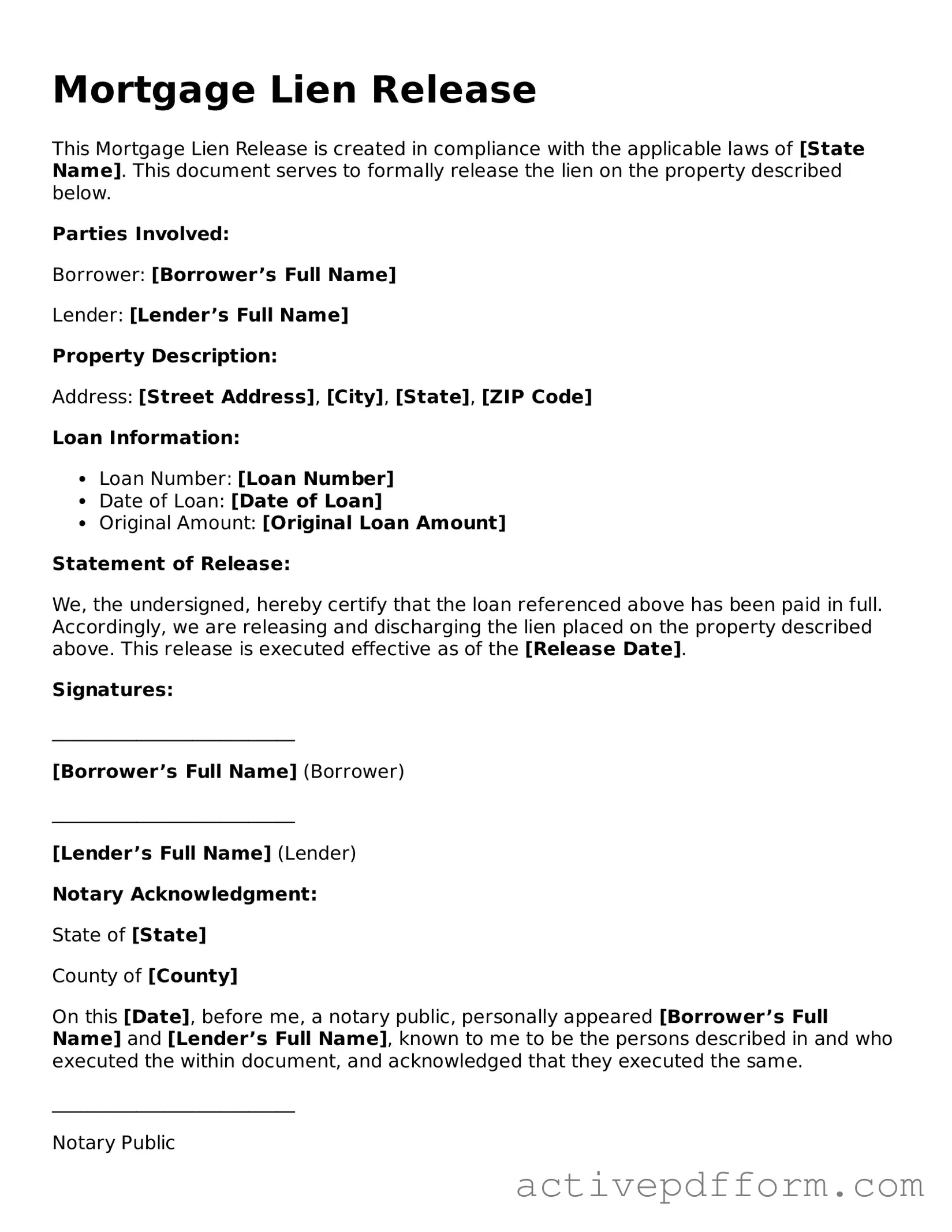What is a Mortgage Lien Release form?
A Mortgage Lien Release form is a legal document that signifies the removal of a lien from a property. When a borrower pays off their mortgage, this form is filed to officially release the lender's claim to the property. This is crucial for homeowners, as it clears the title and allows them to sell or refinance the property without any encumbrances from the previous mortgage.
Why is it important to obtain a Mortgage Lien Release?
Obtaining a Mortgage Lien Release is essential for several reasons. First, it protects your ownership rights. Without this release, the lender may still have a claim on your property, which can complicate future transactions. Second, it ensures that your property title is clear, making it easier to sell or refinance. Lastly, it provides peace of mind, confirming that you have fulfilled your financial obligations to the lender.
How do I obtain a Mortgage Lien Release?
To obtain a Mortgage Lien Release, you typically need to follow a few steps. First, ensure that your mortgage is fully paid off. After payment, request the release from your lender. Most lenders will provide this document automatically, but it’s wise to follow up. Once you receive it, review the document for accuracy and then file it with your local county recorder’s office to make it part of the public record.
What happens if my lender does not provide a Mortgage Lien Release?
If your lender fails to provide a Mortgage Lien Release after you have paid off your mortgage, you should take action. Start by contacting them to inquire about the status of your release. If they are unresponsive or deny your request, consider sending a formal written request. If that still doesn’t resolve the issue, you may need to consult a legal professional to explore your options, which might include filing a complaint with a regulatory agency or pursuing legal action.
Can I sell my home without a Mortgage Lien Release?
Selling a home without a Mortgage Lien Release can be challenging. If there is still a lien on the property, the lender retains a claim, which can hinder the sale. Buyers typically want a clear title, so it’s advisable to obtain the release before attempting to sell. If you find yourself in this situation, consult with a real estate professional to navigate the process effectively.
Is there a fee associated with filing a Mortgage Lien Release?
Yes, there may be a fee associated with filing a Mortgage Lien Release, but it varies by location. Some counties charge a nominal fee for recording the document, while others might not. It’s a good idea to check with your local recorder’s office for specific fees and requirements. Remember, this small cost can save you from potential complications in the future.
